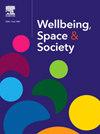A survey on understanding factors that influence accessibility in national and provincial parks for adults with disabilities and caregivers
IF 2.2
Q2 GEOGRAPHY
引用次数: 0
Abstract
Background
Over 8 million Canadians have a disability, and many develop secondary health conditions. Access to nature through national and provincial parks has benefits for wellbeing which can improve the quality of life of people with disabilities and minimize the impacts of related health conditions.
Objective
To facilitate equitable access to parks and park activities, we captured the perspectives of people with disabilities and their caregivers to uncover the factors that influence park accessibility.
Methods
We developed a Canada-wide online survey with open and closed-ended questions, which were organized in relation to the four stages of a park visit: (1) planning a trip to the park, (2) traveling to the park, (3) facilities and activities at the park, and (4) feelings post-visit. Closed ended questions were summarized using descriptive statistics and open-ended questions were analyzed using a summative content analysis.
Results
A total of 210 (136 people with disabilities and 74 caregivers) participants completed this study. We found that four key factors impacted park accessibility: access to information at the planning stage, accessible transportation at the traveling stage, built environment while interacting with park facilities and activities, and inclusivity of the park when reflecting post-visit.
Conclusion
Many barriers to accessing parks still exist for people with disabilities and caregivers. Future research could explore topics such as park information, crowding, implementation of adaptive technologies in parks, and representation of people with disabilities in park governance. Research should consider persons experiencing environmental sensitivities, both vision and hearing loss, and people with hidden disabilities.
影响国家和省级公园成人残疾人及照顾者可达性的因素调查
加拿大有800多万残疾人,其中许多人患有继发性疾病。通过国家公园和省级公园接触自然有益于身心健康,可以提高残疾人的生活质量,并尽量减少相关健康状况的影响。为了促进公园和公园活动的公平准入,我们从残疾人及其照顾者的角度出发,揭示影响公园可达性的因素。方法:我们在加拿大开展了一项在线调查,包括开放式和封闭式问题,这些问题与公园参观的四个阶段有关:(1)计划公园之旅,(2)前往公园,(3)公园的设施和活动,以及(4)参观后的感受。封闭式问题采用描述性统计进行总结,开放式问题采用总结性内容分析进行分析。结果共有210名参与者(136名残疾人和74名护理人员)完成了本研究。研究发现,影响公园可达性的关键因素有四个:规划阶段的信息可及性、旅游阶段的交通可及性、与公园设施和活动互动时的建成环境、以及游览后反思时的公园包容性。结论残障人士和照顾者进入公园仍然存在许多障碍。未来的研究可以探索诸如公园信息、拥挤、公园适应性技术的实施以及残疾人在公园治理中的代表性等主题。研究应考虑到对环境敏感的人,包括视力和听力损失,以及有隐性残疾的人。
本文章由计算机程序翻译,如有差异,请以英文原文为准。
求助全文
约1分钟内获得全文
求助全文
来源期刊

Wellbeing Space and Society
Social Sciences-Social Sciences (miscellaneous)
CiteScore
2.70
自引率
0.00%
发文量
46
审稿时长
124 days
 求助内容:
求助内容: 应助结果提醒方式:
应助结果提醒方式:


